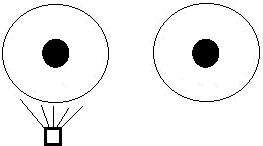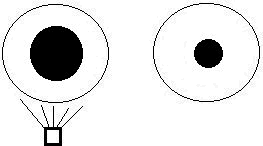
A patient with a left relative afferent
pupillary defect.

A patient with a right dilated and unreactive
pupil.
The swinging flash test shows abnormality of the right
eye
(Note dilatation of the left eye when the light is
swung to the right).

A patient with a right dilated and unreactive
pupil.
The swinging flash test shows abnormality of the left
eye.
(Note the dilatation of the left eye when the light is
swung to the left.)
RAPD:
-Large retinal
lesion
-Optic nerve lesion
Unilateral decreased visual acuity without
RAPD:
-Refractive error
-Cloudy media (cataract)
-Amblyopia
-Hysteria
-Malingering
-Macular lesion
-Chiasmatic problems
RAPD with normal visual
function:
-Damage of the brachium of the superior
colliculus by a thalamic
hemorrhage